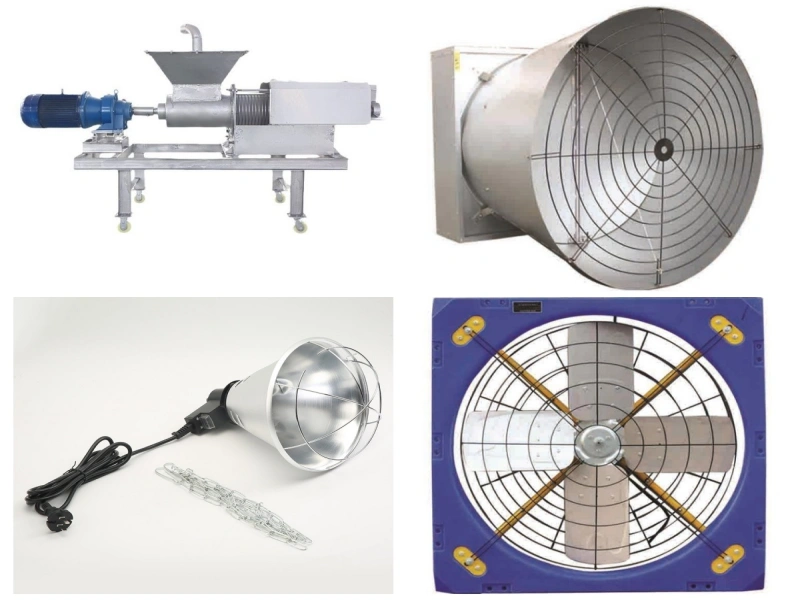Buyer's Guide to Chinese Woodworking Machinery: Focus on Log Splitters and Wood Chippers
Introduction
China has rapidly emerged as a global powerhouse in manufacturing, and its woodworking machinery sector is no exception. Offering a compelling combination of advanced technology, competitive pricing, and a vast array of products, Chinese manufacturers have become a go-to source for businesses and individuals worldwide seeking efficient and reliable wood processing solutions. This guide delves into the specifics of popular wood treatment products like log splitters and wood chippers, providing insights into their features, key specifications, prominent industrial clusters, major companies, and crucial purchasing considerations.
The Chinese woodworking machinery industry has experienced phenomenal growth in recent decades, driven by significant industrialization and a robust domestic and international demand for woodworking products. This growth has fostered a sophisticated manufacturing ecosystem, capable of producing everything from basic hand tools to complex, automated CNC machines. Chinese woodworking machinery is often lauded for its balance of quality and affordability, making it an attractive option for buyers across various scales of operation. The industry is characterized by continuous innovation, with manufacturers increasingly focusing on intelligent and automated production solutions to meet evolving market demands, such as customized furniture production.
I. Log Splitters: Efficient Wood Processing for Firewood and Beyond
Log splitters are indispensable tools for anyone dealing with significant volumes of timber, whether for firewood, lumber, or biomass. They mechanize the arduous task of splitting logs, significantly increasing efficiency and reducing manual labor. Chinese manufacturers offer a diverse range of log splitters, catering to various needs from residential use to heavy-duty commercial operations.

Product Introduction and Types
A log splitter typically consists of a hydraulic system, an engine or motor, a splitting wedge, and a log bed. The hydraulic cylinder pushes the log against the stationary wedge, splitting it into smaller pieces.
The primary types of log splitters available from China include:
Electric Log Splitters: Ideal for residential use, these are quieter, emission-free, and require less maintenance. They are suitable for splitting smaller to medium-sized logs and are often designed for horizontal operation.
Gas-Powered Log Splitters: These offer greater power and portability, making them suitable for larger logs and remote locations where electricity is not readily available. They come in various tonnage capacities and often offer both horizontal and vertical splitting positions, allowing users to split heavy logs without lifting them.
Hydraulic Log Splitters (PTO/Tractor-Mounted): Designed for heavy-duty commercial or agricultural use, these splitters are powered by a tractor's power take-off (PTO) or a dedicated hydraulic system. They offer immense splitting force and are built for continuous, high-volume operation.
Key Specifications and Parameters
When considering a Chinese-made log splitter, several specifications are paramount:
Splitting Force (Tonnage): This is the most critical parameter, indicating the maximum force the machine can exert. Common capacities range from 6 tons for light-duty electric models to over 50 tons for commercial hydraulic units. The required tonnage depends on the type and diameter of wood you intend to split. Hardwoods and larger diameter logs require higher splitting force.
Engine/Motor Power: For gas-powered models, engine horsepower (HP) or cubic centimeters (cc) indicates performance. For electric models, wattage (kW) or voltage (V) and amperage (A) are important.
Log Capacity (Length and Diameter): This refers to the maximum length and diameter of logs the splitter can accommodate. Standard log lengths are often around 24-26 inches (610-660mm), but some models can handle longer logs.
Cycle Time: This indicates how quickly the ram extends and retracts to complete a splitting cycle. Shorter cycle times mean higher productivity.
Hydraulic System: Look for details on pump flow (GPM), cylinder bore, stroke, and hydraulic fluid capacity. A robust hydraulic system is crucial for consistent performance and longevity.
Features: Consider features like horizontal/vertical operation, log cradles, auto-return valves, tow hitches for portability, and four-way wedges for faster splitting.
Safety Features: Ensure the machine is equipped with essential safety mechanisms like two-hand operation, emergency stop buttons, and sturdy guards.
II. Prominent Chinese Log Splitter Manufacturers
Several Chinese companies have established themselves as reliable manufacturers and exporters of log splitters:
Qingdao Kndmax Machinery Co.,Ltd(KNDMAX): A leading manufacturer known for hydraulic log splitters ranging from 22-ton to 35-ton capacities, often with 6.5hp and 15hp engines. They emphasize ergonomic design, state-of-the-art machinery, and ISO certification.

Laizhou Newhardware Machinery Co., Ltd.: It is a technology-based joint venture enterprise engaged in research, development, specialized manufacturing and sales of woodworking machinery and gardening machinery such as vertical log splitters and horizontal log splitters. The company covers an area of 38,600 square meters, with a construction area of 18,650 square meters, fixed assets of RMB 68 million, 560 employees and 52 engineering and technical personnel.

Austter: A leading manufacturer known for hydraulic log splitters ranging from 22-ton to 35-ton capacities, often with 6.5hp and 15hp engines. They emphasize ergonomic design, state-of-the-art machinery, and ISO certification.
III. Wood Chippers: Transforming Wood Waste into Valuable Resources
Wood chippers are essential machines for managing wood waste, turning branches, limbs, and smaller logs into wood chips. These chips can then be used for mulching, composting, biomass fuel, or other applications, promoting sustainability and efficient waste management.

Product Introduction and Types
Wood chippers generally consist of a feeding hopper, a chipping mechanism (either a disc or drum), and a discharge chute. Wood is fed into the hopper and then processed by sharp blades, reducing it to chips.
Key types of wood chippers from China include:
Disc Chippers: These use a heavy steel disc with blades mounted on its face. They are known for producing uniform chips, making them suitable for biomass fuel or pulp production.
Drum Chippers: Featuring a rotating drum with knives, these chippers are generally more aggressive and can handle a wider variety of material, including irregular shapes and larger diameters. They are often preferred for mulching and general waste reduction.
Gravity-Fed Chippers: Smaller, often electric or gasoline-powered, these rely on gravity to feed material into the chipping mechanism. They are suitable for light residential use.
Hydraulic/PTO-Driven Chippers: Similar to log splitters, these heavy-duty chippers are powered by tractors or dedicated hydraulic systems, offering high capacity and continuous operation for commercial and industrial applications.
Mobile Wood Chippers: Mounted on trailers with their own engines, these are highly portable and can be easily transported to various job sites.
Key Specifications and Parameters
When selecting a Chinese wood chipper, consider the following:
Chipping Capacity (Diameter): This indicates the maximum diameter of wood the machine can process. Capacities range from 3 inches for small residential chippers to over 10-12 inches for industrial models.
Engine/Motor Power: As with log splitters, higher horsepower (HP) or kilowatt (kW) ratings generally indicate greater chipping capability and efficiency, especially for processing harder wood or larger volumes.
Feeding System:
Gravity Feed: Simple, but relies on the material's weight.
Hydraulic Feed: More advanced, pulls material into the chipper automatically, greatly enhancing safety and efficiency. This is crucial for larger chippers.
Discharge Chute: Adjustable chutes are desirable for directing chips where needed.
Portability: Consider whether the chipper needs to be mobile (trailer-mounted) or stationary.
Blade Material and Number: High-quality, durable blades (often made of hardened steel) are essential for longevity and efficient chipping. The number of blades can affect chip size and processing speed.
Safety Features: Look for safety bars, emergency stops, and robust housing to protect operators.
IV. Prominent Chinese Wood Chipper Manufacturers
The Chinese market features numerous wood chipper manufacturers, with a strong presence in regions known for machinery production:
Shandong Kesen Machinery Manufacturing Co., Ltd.: Founded in 2003, Kesen Machinery produces various wood chippers, shredders, and other forestry equipment, focusing on high-quality products.

Intradin: In addition to log splitters, Intradin also manufactures high-quality wood chippers and shredders for residential use, including various discharge types and rotor designs.

Qingdao Kndmax Machinery Co.,Ltd(KNDMAX): A significant player offering a wide range of wood chippers, including industrial models, diesel-powered units, and PTO wood chippers, with various capacities and certifications (CE, ISO9001, SGS).
Zouping Xingtai Machinery Co., Ltd., Jinan Shanghangda Machinery Co., Ltd., Yongkang Maxpower Technology Co., Ltd., Henan Shengmiao Instrument Co., Ltd., Weifang Sinolink Heavy Industry Co., Ltd.: These are some of the many manufacturers listed on platforms like Made-in-China.com, indicating a broad base of suppliers.
V. Industrial Clusters: Where Chinese Woodworking Machinery Thrives
China's manufacturing strength is significantly bolstered by its industrial clusters, which are geographical concentrations of interconnected companies, suppliers, service providers, and related institutions. These clusters foster specialization, complete supply chains, and competitive environments. For woodworking machinery, three main industrial clusters stand out:
Pearl River Delta Industrial Cluster (Guangdong Province): Centered around cities like Foshan and Shunde (Lunjiao is a well-known hub within Shunde), this region is a powerhouse for various industries, including woodworking machinery. The proximity to a complete industrial chain, from raw materials to components, strengthens manufacturing capabilities and offers a wide selection of products.
Yangtze River Delta Industrial Cluster (Shanghai and surrounding areas): With Shanghai as its center, this cluster also boasts a significant number of woodworking machinery manufacturers. Its strategic location and well-developed infrastructure contribute to its prominence.
Shandong Peninsula Industrial Cluster (Shandong Province, especially Qingdao): Qingdao is a major center for woodworking machinery, with a substantial annual industrial output and export value. This cluster excels in various machinery types, with a leading position in sanding machines and comprehensive solutions for wood-based panel and furniture production.
These clusters offer advantages such as access to skilled labor, specialized suppliers, efficient logistics, and often, government support for innovation and quality improvement.
VI. Purchasing Considerations: Navigating the Chinese Market
Importing woodworking machinery from China can be a highly rewarding endeavor, but it requires careful consideration and due diligence. Here's a comprehensive guide to ensure a successful purchase:
1. Machine Quality and Specifications
Understand Your Needs: Before looking at products, clearly define your requirements. What type of wood will you process? What is the desired output volume? What level of automation do you need?
Build Quality: Pay close attention to the machine's construction. Look for sturdy, welded steel frames (not flimsy structures). Inquire about the quality of critical components like motors, hydraulic pumps, guide rails, and control systems.
Certifications and Standards: Prioritize machines with relevant international certifications, such as CE (Conformité Européenne) for the European market, ISO (International Organization for Standardization) for quality management, and EPA (Environmental Protection Agency) for engines in the US. These certifications indicate adherence to safety and quality standards. Always ask for certification documents.
Technical Specifications Match: Ensure that the provided specifications (e.g., tonnage, chipping capacity, motor power, log length) precisely match your operational needs. Do not assume; verify.
2. Selecting a Reliable Supplier
This is arguably the most critical aspect of sourcing from China.
Research and Vetting:
Online Presence: Evaluate their website, product catalogs, and presence on reputable B2B platforms (e.g., Alibaba, Made-in-China). Look for detailed product descriptions, professional imagery, and clear contact information.
Reviews and Testimonials: Search for independent reviews, customer feedback, and industry discussions about the supplier.
Track Record: Prefer established companies with a proven track record in exporting woodworking machinery. Inquire about their export history and destination countries.
Communication: Effective and timely communication is crucial. Assess their responsiveness, clarity of answers, and English proficiency (if applicable). A good supplier will be transparent and willing to answer all your questions.
Factory Visit (If Feasible): If you are making a significant investment, a factory visit (either in person or through a third-party inspection service) can provide invaluable insights into their manufacturing capabilities, quality control processes, and overall professionalism.
Trade Assurance/Escrow Services: Utilize platforms that offer trade assurance or escrow services. These payment methods protect both the buyer and the seller by holding funds until the buyer confirms satisfactory receipt of goods.
References and Case Studies: Ask for references from past international clients or examples of successful projects.
3. After-Sales Service and Support
This is a common concern when purchasing from overseas. A reliable supplier should offer comprehensive after-sales support:
Installation and Commissioning: Inquire if they provide guidance or even on-site assistance for machine installation and commissioning. Some larger manufacturers offer field installation services.
Operation Training: Check if they provide training for operating and maintaining the machinery. This might include training videos, user manuals in English, or even on-site training by their engineers.
Technical Support: A reputable supplier should offer readily available technical support (e.g., via email, phone, video calls, or online chat) to assist with troubleshooting and operational queries. Look for 24/7 availability if possible.
Spare Parts Supply: Ensure a reliable supply of spare parts. Downtime due to unavailable parts can be costly. Ask about their spare parts inventory, lead times for delivery, and if they have distributors in your region.
Warranty Services: Understand the warranty period and what it covers. Clarify procedures for warranty claims and repairs. Many offer 1-3 years warranty for the whole machine.
Maintenance Programs: Some suppliers offer preventive maintenance services or guidance to prolong the machine's lifespan.
4. Customization Options
Many Chinese manufacturers offer a degree of customization to meet specific customer requirements.
Design Modifications: Inquire if they can adapt existing models to your specific needs, such as adjusting log capacities, adding specialized features, or modifying power sources.
Component Selection: For larger orders, you might be able to specify certain components (e.g., specific engine brands, hydraulic pumps, or control systems).
OEM/ODM Services: If you are a distributor or have unique branding needs, discuss Original Equipment Manufacturer (OEM) or Original Design Manufacturer (ODM) services.
5. Pricing, Payment, and Logistics
Transparent Quotations: Request detailed quotations that clearly itemize the machine model, included accessories, warranty, and Incoterms (e.g., FOB, CIF). Understand what is included and what is not.
Budget Realistically: Beyond the machine's cost, factor in additional expenses such as:
Shipping Costs: Sea freight is common for heavy machinery; expect it to be 10-15% of the machine's cost.
Import Duties and Taxes: Research your country's specific import tariffs and taxes for woodworking machinery.
Customs Clearance Fees: Costs associated with clearing the goods through customs at your port of entry.
Local Transportation: From the port to your facility.
Installation and Commissioning Costs: If you require professional assistance.
Payment Terms: Typical payment terms involve an upfront deposit (e.g., 30%), with the balance paid upon shipment or after satisfactory receipt. Use secure payment methods.
Lead Time and Production Schedules: Understand the estimated production time and shipping duration to plan your operations accordingly.
VII. Conclusion
The Chinese woodworking machinery market, particularly for log splitters and wood chippers, presents a vast landscape of opportunities for buyers seeking efficient, cost-effective, and increasingly advanced solutions. By thoroughly researching products, carefully vetting suppliers, understanding key specifications, and meticulously planning for logistics and after-sales support, importers can confidently navigate this dynamic market and acquire machinery that delivers reliable performance and exceptional value. IMEXsourcing, equipped with extensive experience in log splitters and wood chippers procurement and a reliable legal team, can provide full protection to help you avoid all such risks effectively.





